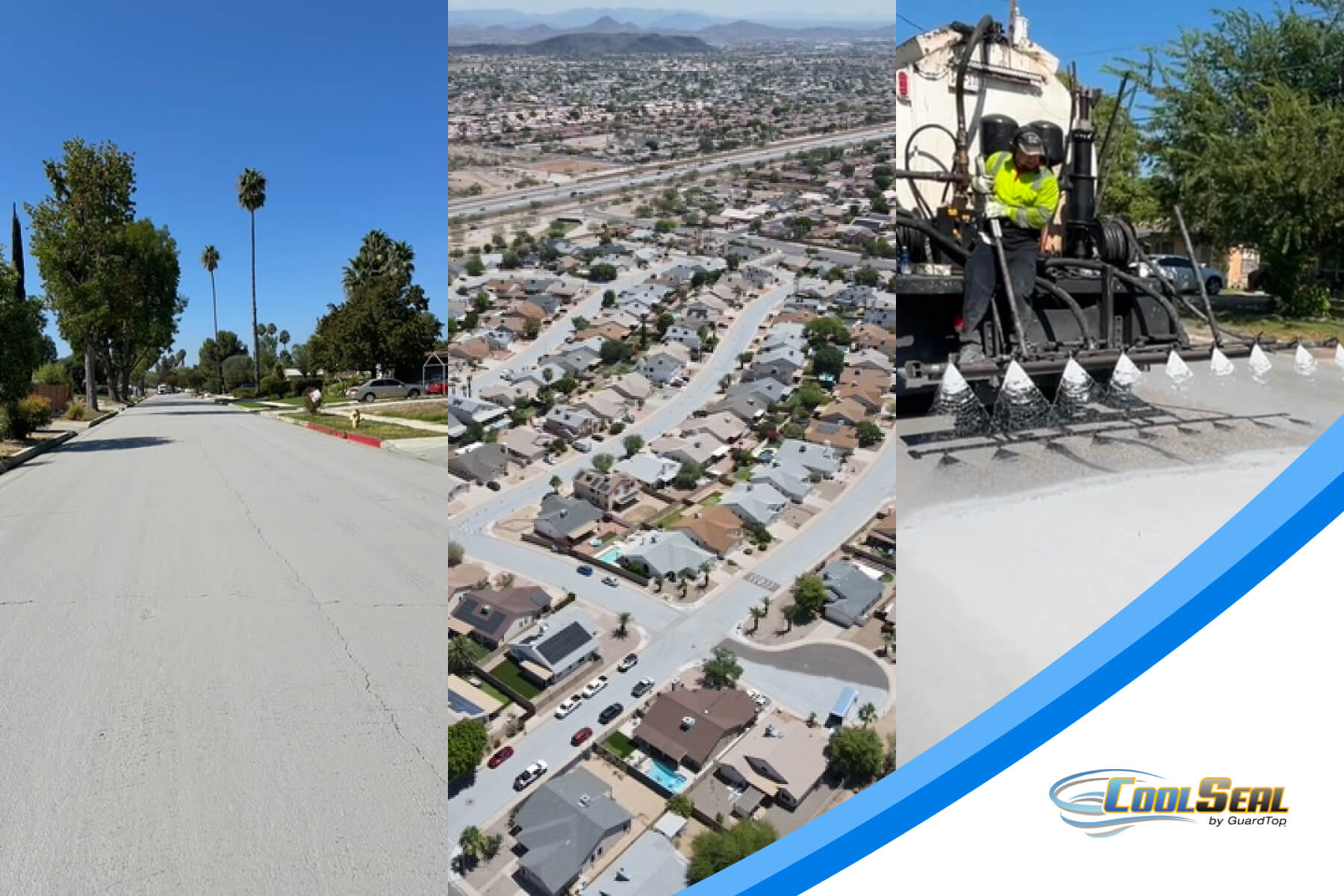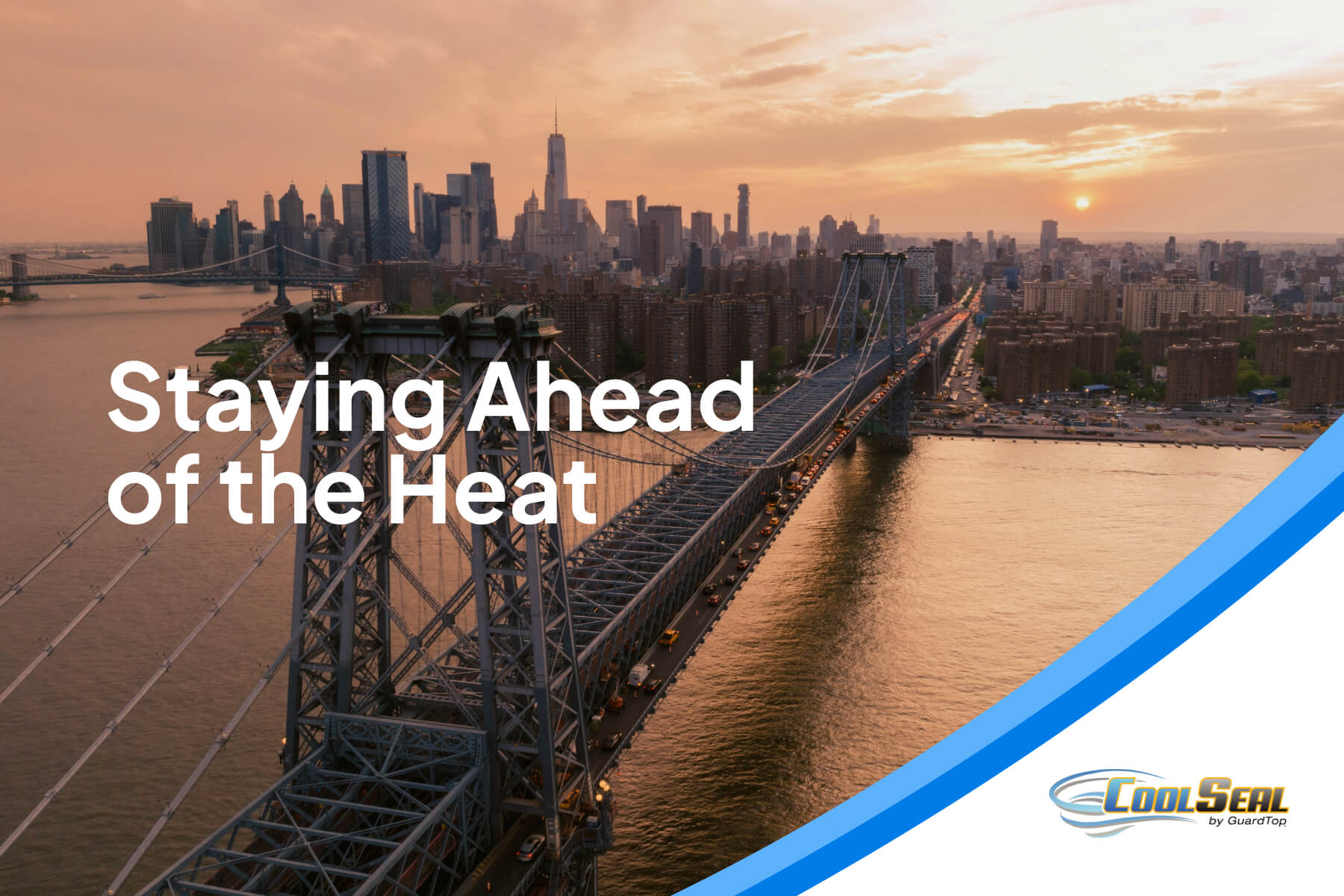On the Road to Beating the Heat
Committing to a cooler tomorrow, we are in our pursuit of innovative solutions for urban living, we aim—in partnership with cities, private institutions and construction projects—to fundamentally transform communities into cooler, more sustainable environments. By tackling urban warming head-on, we're not just changing landscapes—we're enhancing the quality of life for communities everywhere.

Temperature Reduction
CoolSeal significantly lowers surface temperatures, making urban areas more livable and reducing the reliance on air conditioning. This not only enhances outdoor comfort but also contributes to a substantial decrease in urban heat islands, fostering a cooler environment for all.
Energy Savings
By reflecting sunlight and reducing surface temperatures, our solutions contribute to lower energy consumption within urban buildings. This translates into considerable energy savings and reduced greenhouse gas emissions, aligning with broader sustainability goals.
Lower Long-Term Costs
The innovative design of CoolSeal not only withstands the test of time better than traditional materials but also requires less maintenance. This durability translates into cost savings for cities and private institutions alike, making it a smart investment for the future.
How It Works

Reflective Formula

Temperature Reduction

Urban Heat Island Mitigation

Sustainability
Create Change With Us
Allow the CoolSeal team to provide technical support and assistance with sustainability, heat mitigation, and climate planning programs, and assist with grant preparation.
Heat mitigation planning and implementation support
Sustainability and climate program consultation
Grant writing, application preperation and submission

CoolSeal at Work
Get the latest updates on cooling communities and creating change.

A Look Back at 2025! CoolSeal’s Progress in Cooling Communities

Stay Ahead of the Heat! 2025-2026 Programs and Planning Resources for Cities

CoolSeal Joins the Reflect Effect Event in Los Angeles
FAQs
Find answers to commonly asked questions about CoolSeal's innovative asphalt sealcoat.
Heat islands — typically referred to as urban heat islands (UHI) — are urban and suburban areas with significantly higher temperatures than surrounding rural areas. UHIs can impact energy use, environmental issues, and public health.
Many cities and suburbs lack abundant green spaces and trees, which naturally cool the air and ground through evapotranspiration (water absorbed through the ground and emitted as vapor), provide shade, and capture dioxide. Many building materials, such as asphalt, concrete, and dark rooftops, trap and retain heat. As cities grow vertically with tall buildings, air flow is limited and heat is kept close to the ground, causing UHI effects even at night. Densely populated and densely constructed cities also emit more waste heat from vehicles, factories, and construction, worsening the effect.
Yes. Although suburbs may grow horizontally with fewer high-rise buildings and may have more parks, these areas still have features that induce heat islands. Large parking lots, wide roads, energy-intensive businesses, large homes cooled by air conditioning, and building and roofing materials that retain heat can all contribute to heat islands.
Mean radiant temperature measures both outdoor air temperature (OAT) and surrounding surface temperatures to provide an accurate assessment of how heat feels and is perceived, similar to "wind chill factor." It is useful for measuring urban heat islands, where MRT is typically higher than nearby rural areas even when the OAT is similar, due to surfaces that trap heat, higher density, and fewer green spaces.
UHIs affect air and water quality, increase peak energy demand in summer, and can lead to serious health concerns and death. Urban heat disproportionately affects vulnerable populations in dense areas, including lower-income people who do not have air conditioning, senior citizens, and unhoused people. For example, a report found that in New York City between 2010-2020, more than 100 residents died of heat stress and another 2% of deaths by natural causes were considered to be exacerbated by summer heat. Daily life impacts include higher utility bills in summer, rolling blackouts, inability for children to engage in healthy outdoor play, and difficult conditions for construction, utility, and other outdoor workers.
Urban heat islands lead to higher energy usage and greenhouse gas emissions as people and businesses increase their use of air conditioning and fans. Without carbon dioxide-absorbing vegetation, more emissions enter the atmosphere.
Reducing surface temperatures and mean radiant temperature can lead to less energy use in the summer. Planting more trees and increasing vegetation cover, green spaces, and rooftop gardens helps absorb carbon dioxide, as well as protect against erosion and reduce stormwater runoff. Using surface materials like CoolSeal, which incorporates recycled materials in its formula and is free of polymers, hazardous volatiles, and carcinogenic additives, provides additional environmental benefits.
CoolSeal reflects 30% more sunlight and lowers surface temperatures by 10-16℉, compared to uncoated asphalt. It can lower surface temperatures by up to 20℉ as compared to black-coat asphalt. It also lowers subsurface temperatures by nearly 5℉, resulting in long-lasting surfaces that reduce maintenance needs and save on costs.
